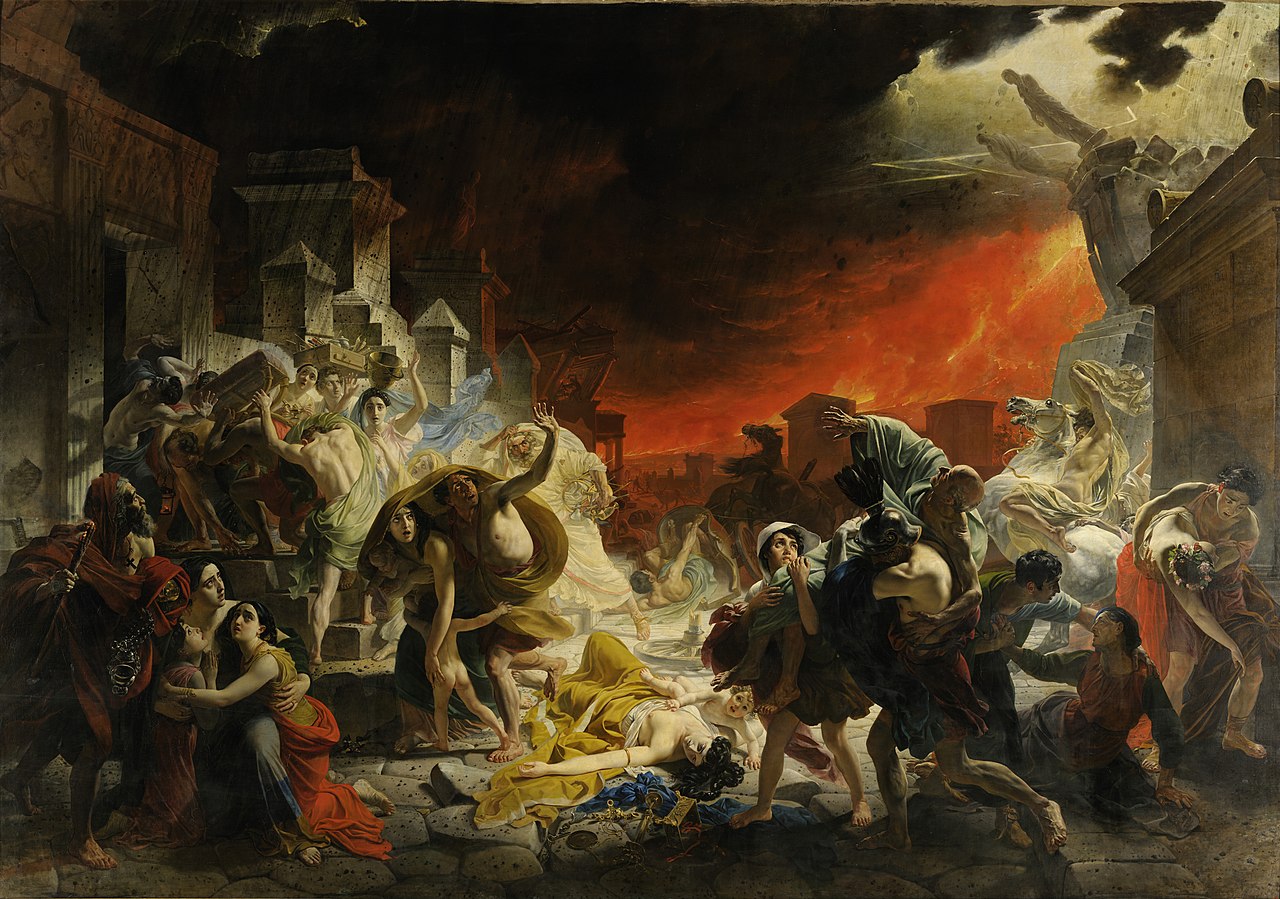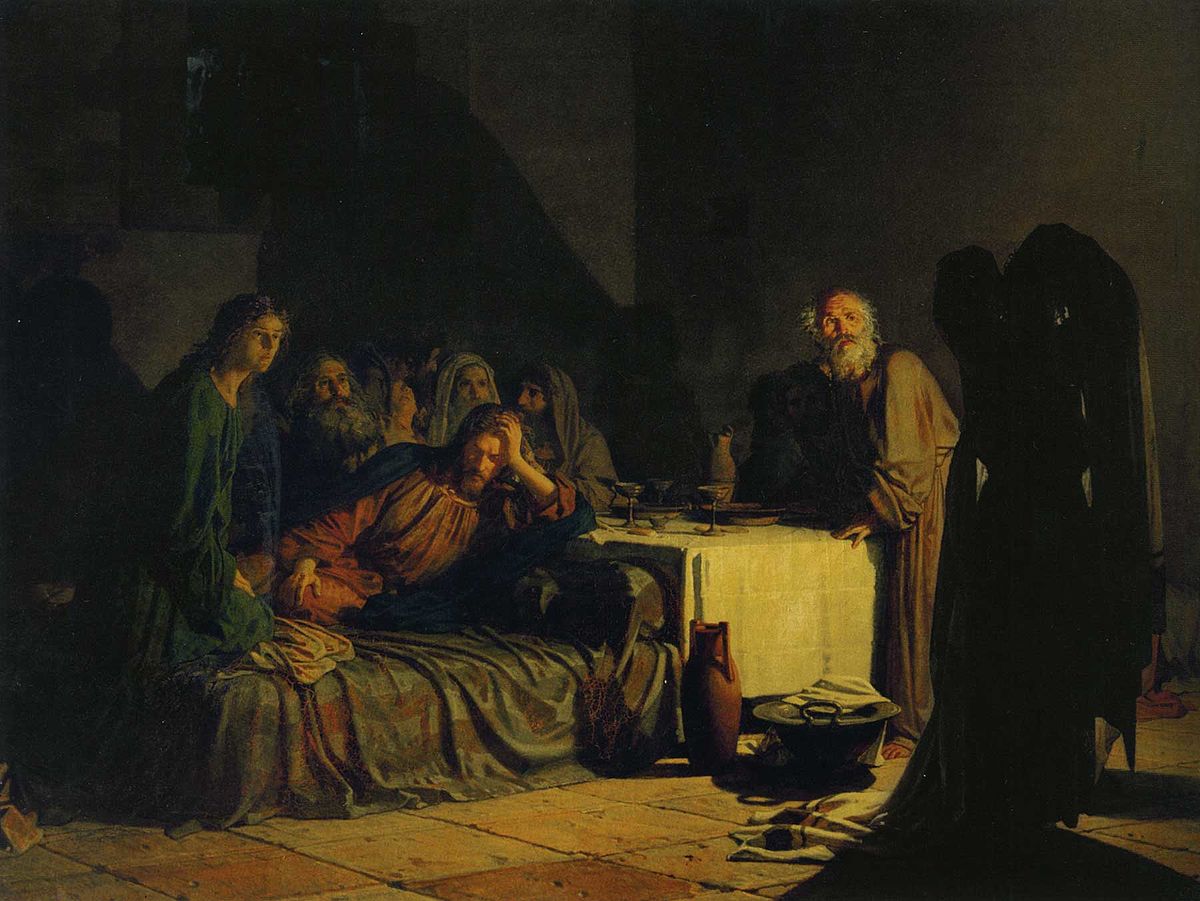The “Last Day of Pompeii” by Karl Bryullov and “The Last Supper” by Nikolai Ge are among the most outstanding masterpieces of Russian art in the Russian Museum
By OKSANA KOPENKINA, art analyst and founder of the Arts Diary website
Karl Bryullov. Last Day of Pompeii. 1833
Four years of preparatory sketches, a year of nonstop work in the studio, a few fainting fits – and here is the result: the death of a city on 30 m2 of canvas.
Probably there wasn’t another painting that created such an uproar. It was constantly surrounded by a thick crowd; the critics proclaimed Bryullov a new Titian, and even Nikolai I honoured the artist with a personal visit.
Only Alexander Benois, a famous art historian of the 19th and 20th centuries, dared to criticize “Pompeii”. And he criticized very viciously: “Pomposity … Painting for all tastes … Theatrical loudness …”
What was it that won every heart then and continues to amaze us now? And what exactly annoyed Benois so much?
We see a very tragic moment in the picture. In a few minutes, all these people will be dead. But that doesn’t turn us off. Because we are fascinated by… beauty. Beauty of people, beauty of tragedy.
In 1828, the young Bryullov lived and worked in Rome. Shortly before that, archaeologists began excavations of three cities that died from the eruption of Vesuvius – Pompeii, Herculaneum and Stabiae. Bryullov could not pass by such an event and went to the excavation site. By that time, Pompeii was the best cleared. The artist was so amazed by what he saw that he started work almost immediately.
 Despite all the “theatricality” which Benois mentioned, there is a lot of truth in Bryullov’s painting. The scene was not invented by him. That street at the Herculaneum Gate, depicted by the artist, exists in Pompeii. And the ruins of a temple with a staircase still stand there. And there are the ruins of a temple with a staircase.
Despite all the “theatricality” which Benois mentioned, there is a lot of truth in Bryullov’s painting. The scene was not invented by him. That street at the Herculaneum Gate, depicted by the artist, exists in Pompeii. And the ruins of a temple with a staircase still stand there. And there are the ruins of a temple with a staircase.
Bryullov personally studied the remains of the victims. And he found some of characters in Pompeii. For example, a deceased woman hugging two daughters. On one of the streets, there were found wheels from a carriage and scattered decorations. So Bryullov got the idea to depict the death of a noble Pompeian woman. Among skeletons discovered, Bryullov saw a pagan priest who tried to take his wealth with him.
Buildings in the painting are crumbling “correctly”. Volcanologists claim that Bryullov depicted an earthquake of magnitude 8. And very believable. This is exactly how buildings collapse during tremors of such strength.
Lighting is very well thought out in Bryullov’s work. The lava of Vesuvius illuminates the background so brightly, that it saturates the buildings with a red color, and it seems that buildings are on fire. The foreground is illuminated with white light from a flash of lightning. Such contrast makes the space especially deep and believable at the same time.
But in the depiction of people, plausibility is absent. Here Bryullov, of course, is far from realism. What would we have, if Bryullov were more realistic? There would be chaos and pandemonium. We wouldn’t have the opportunity to look at every character, on the contrary. They would have already been dirty with soot and dirt. And the faces would be distorted with horror.
And what do we see at Bryullov? The groups of characters are arranged in such a way so that we can see each of them. Even in the face of death, they are divinely beautiful.
Yes, this is an extreme aesthetic catastrophe. Benois was right about criticizing that. But it is only due to the painting’s theatricality that we do not turn away in horror. This is more of a beautiful legend than a harsh reality.
You can also see that the main female characters of the canvas have the same face. At different ages, with different expressions, but this is the same woman – Countess Yulia Samoilova, the love of the life of Bryullov. The portrait of Samoilova can also be seen in the Russian Museum.
On the canvas, you can also see Bryullov himself in the role of an artist who covers his head with a box of brushes and paints.
The Last Day of Pompeii is a story about a catastrophe told very spectacularly and delightfully. The characters selflessly played their roles. Special effects are at the highest level. The light is delivered phenomenally. It is a theatre, but a very professional theatre.
Nikolai Ge. Last Supper. 1863
The Last Day of Pompeii was accepted by the public very well. That was not the case with Ge’s Last Supper, though. Many, like Dostoevsky, found that it was too earthly. Especially irritated was the Church, so much that they banned even reproductions of the work.
 Why did this happen? Think of how other artists showed this scene before – Leonardo da Vinci, for example. Jesus and his apostles sit around the table together, Judas among them. Nikolai Ge ignores this cannon. He shows Christ lying down, which is historically accurate: that was the way Jews ate 2000 years ago. Jesus has already announced his prophecy and asked Judas to leave and finish what he planned. Judas stands up to go.
Why did this happen? Think of how other artists showed this scene before – Leonardo da Vinci, for example. Jesus and his apostles sit around the table together, Judas among them. Nikolai Ge ignores this cannon. He shows Christ lying down, which is historically accurate: that was the way Jews ate 2000 years ago. Jesus has already announced his prophecy and asked Judas to leave and finish what he planned. Judas stands up to go.
We meet him in the doorway. He’s putting on his cloak, about to step into the dark – both literally and figuratively. His face is obscured by his own sinister shadow.
This scene causes more complex emotions. Jesus feels Judas’s betrayal deeply but accepts it. Peter is outraged and confused: he’s leaped from his seat and follows Judas with his eyes. John can’t believe what he sees, just like a child meeting unfairness for the first time.
Ge also paints only nine apostles to make the scene less crowded and obviously not giving much significance to the number. For the Church, however, these details were vital.




